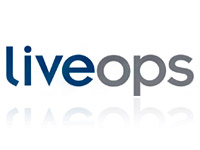Remember when your mother used to yell up the stairs to get you to turn your music down? Sometimes, in the age before sensitivity awareness, your dad would do the yelling and he’d substitute noise for music. Ah, the good old days. Too bad they aren’t here right now yelling at vendors.
ConsumerAffairs.com is the brainchild of James R. Hood, a former Washington, D.C., journalist and public affairs guy. It’s located in Lake Tahoe, according to the website, so I’m just guessing that it’s the retirement project for Mr. Hood.
I hesitated before writing that last sentence, thinking perhaps “retirement project” was a bit harsh, but then I remembered what I was writing about and decided that even though “retirement project” might or might not be correct, the research just published suggests a person with, shall we say, time on his hands. Incidentally, much the same can be said of me since I took the bait and wrote this. Whatever.
Original Research
ConsumerAffairs.com carried out a little project to compare and contrast hold music at some major corporations. That’s right — they called up and got put on hold (which is not hard), recorded the music, and then wrote about it. I write about it now because I see it as my duty as a CRM analyst, which is my job and not some dreamed-up project, so there.
That said, the analysis at first seems surprisingly insightful. However, it’s perhaps not all that surprising when you think about it. Hold music is part of “product dress,” which is a legal term for the accoutrements of a brand that are not exactly the brand, and that may not be branded, trademarked or copyrighted independently.
One example I’ve heard of is the Coke bottle; its distinctive design is protected by a trade dress (or “product dress”) registration. In a long-running legal battle involving smartphones and billions of dollars, Apple complained that Samsung had used some of the iPhone’s product dress in designing its smartphones.
In my mind, hold music is part of a brand, so choose it carefully.
Coke vs. Pepsi
At any rate, let’s look at a few examples, first up is Coke vs. Pepsi. Coke presents itself as the market leader and above the fray by providing classical music. I don’t know what pieces the company plays — it might have been Vivaldi or Hayden or Handel — but the music was mostly strings and soothing.
By the way, this is a good time to note the terrible sound quality of all the vendors I sampled. All of the music sounded like it was being played through a washing machine.
On to Pepsi. This company has positioned itself as the choice of youth since John Sculley began driving marketing — but what youth? Pepsi seemed to be targeting people who remember the ’60s and ’70s with a jingle reminiscent of Nancy Wilson’s style followed by a bad imitation of The Rolling Stones. Talk about covering your bases.
Home Depot vs. Lowe’s
The home improvement stores’ choices were interesting. Home Depot took advantage of its captive hold audience to advertise. The clip I heard promoted its gift card — you know, so you can get exactly what you want. That’s what I want for my next birthday.
Lowe’s defaulted to serenity and classical music uninterrupted by a voice. Perhaps the different positioning of the stores reflects blue-collar construction vs. home decorating, even though both carry lots and lots of the same merchandise. Personally, I am bombarded with advertising all day, and a chance to avoid it makes the choice obvious — at least for me.
American Airlines vs. United
Talk about Coke vs. Pepsi. The two legacy airlines’ music sounded the same to me.
American played Adele’s hit Love song, but the sound quality was so bad that the vocalist sounded like she was being drowned in that washing machine.
United played something that sounded like a supermarket circa 1970, and both airlines interrupted their music with announcements.
CVS Health vs. Sears Holdings
You might be wondering about the validity of this matchup, but ConsumerAffairs.com lumped them together as big retailers. CVS fills more prescriptions in the U.S. than anybody, and Sears has been a retail icon for well over a century, having started out offering catalog sales and rural free delivery — the equivalent of the Internet today, if you think about it.
CVS’ hold music sounded like electric piano interspersed with soprano sax in some light jazzy riffs reminiscent of Kenny G.
Sears sounded like an imitation of Herbie Hancock doing Watermelon Man or Cantaloupe Island.
Why Me?
In all cases, the hold music sounded like it was aimed at a middle-aged person like me. That’s no surprise when you think about it. Who else sits on hold calling into a contact center? Gen X-ers and Millennials might pull out their phones, but only to surf over to the vendor and make an automated inquiry.
So what can we learn from this hold music research? I think it underscores the importance of a multichannel or omnichannel strategy in CRM. These vendors have a pretty good idea of who their customers are and the channels they use, and that’s Job No. 1 when you’re trying to figure out which CRM to buy. So this was quite useful research, even though it initially seemed fluffy.


























































